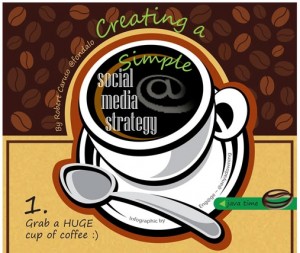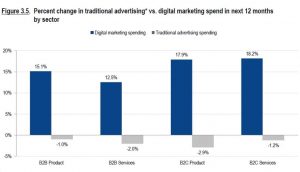
It’s been said again and again that video content is crucial for helping your business grow in the digital age.
Maybe a couple of years ago you’d take that statement for granted. But now, it’s not something that you can gloss over anymore.
But have you ever really thought about why?
Video gives more audience behavior analytics
Video hosting platforms like YouTube, Vimeo, and Wistia don’t take data analytics lightly. They really want to help businesses or personal video producers get their insights.
How that happens varies from one video hosting platform to another.
But keep in mind that YouTube is a free video hosting website, while Vimeo and Wistia are more dedicated to business videos.
Regardless, they all provide significant amounts of data that creators, businesses, and anyone who uses video as a part of their business need. (Of course, one of them might have one or two features that the others don’t.)
These features are behavioral analytics which you can use to see various aspects of your video content’s performance.
Let’s take a look at YouTube analytics.

Features like watch time, retention, demographic, and traffic sources are advantageous not only for monitoring but also for figuring out the next video you want to produce.
These metrics help you shape your video’s details to meet your target audience’s preferences.
For example, if the video retention or watch time is low, chances are it has something to do with the early part of your video.
The graph shown is for one of our videos, called “What is Pinterest?”
You can see that the average view duration in that graph is on par throughout.
With these statistics, we know that our video was introduced properly and that it gets viewers to watch it for roughly the same duration.
From the overview tab above, you can see how that video is performing.
Further details such as revenue, demographics, traffic sources, likes and shares can be discovered in their own tabs, with details that may or may not help you plan your next video content, depending on how you view video marketing.
Emotional connection with audience
The purpose of embedding emotional value into video content is not merely to make the audience feel sad, happy, surprised or any other emotion.
Emotionally relatable videos also have a better chance of being shared by viewers.
Some campaigns use emotional value as their primary weapon.
The ALS ice bucket challenge was one of the biggest charity campaigns ever. In total, the campaign raised more than $ 115 million in charitable donations.
Amazing what a simple video concept can do, huh?
ALS ice bucket challenge videos were strong in the element of surprise.
Viewers didn’t know when, or how exactly, the buckets of icy cold water would fall, how the person was going to react, or what words would come out of their mouths.
Our brains process emotions much faster than logic. The emotional brain processes sensory information in one-fifth of the time the cognitive brain takes to assimilate the same input.
That’s probably why people tend to do dumb stuff when they’re emotionally involved in a situation.
But can you make an emotional video using animation?
That’s probably why people tend to do dumb stuff when they’re emotionally involved in a situation.
But can you make an emotional video using animation?
Absolutely.
When we’re emotionally triggered by a situation, our brain releases a chemical called oxytocin. It helps us form empathy, emotional connections, and even trust.
Not surprisingly, the data doesn’t lie.
According to an analysis made by IPA Databank which has 1,400 case studies of successful advertising campaigns, campaigns with purely emotional content perform about twice as well (31% vs. 16%) as campaigns with only rational content.
But achieving an emotionally relatable animated video isn’t a walk in the park.
An animated video that aims to form an emotional connection with its audience has to have well-designed characters and overall visuals.
A character that closely resembles a person will form a stronger intrinsic emotional power compared to an alien-looking character.
The number of video-favoring tech and platforms is growing
Gadgets and digital platforms are two paths that lead to success for today’s video marketing.
Smartphone and smart TV brands are launching new flagship products more often than ever, less than 6 months after the releases of iPhone 7 and iPhone 7s, Galaxy 7 and 7 Edge, and Google Pixel.
Digital platforms that weren’t originally made for videos (e.g., Twitter and LinkedIn) have been adapting to the video content format.
It’s predicted that by 2017, 74% of internet traffic will be coming from video.
This means that there will be an enormous amount of video content on the internet, from a YouTuber’s daily vlogs to educational videos, explainer videos, ads and more.
If the platforms are there, why wouldn’t you want to use them?
Videos are the prize of search engines
Video is the ace in the hand for the search engine optimizer.
Search engines crawl for information such as on-page time, backlinks, and traffic to see whether your content is really worth being displayed in their SERPs.
In fact, Forrester Research found that the presence of video on a web page makes it 53x more likely to appear on the first page of Google.
And while those percentages are always changing, the principle remains consistent: video increases the searchability of your content.
Video pages send strong “indicators of relevance” to search engines, like Google, which boost the search rank of your content.
Some of those tangible benefits for SEO include:
- Doubled time on page.
- 3x more natural inbound links.
- 200-300% more unique monthly site visits.
- 41% higher click-through rates from search.
Takeaways
The main reason that you should adapt to using video content is really simple: the trend demands you do it.
That’s one of the key aspects of surviving tight competition in the marketing world.
It’s good to be different from your competition, but being different doesn’t always mean being useful.
Instead of being blatantly different from your competition, try standing out of the crowd.
It means that you’re still following the trend, but you do it much better than others. That way you can tackle any competitor that comes your way.
The key takeaways from this article are:
- Video content gives you more insight into your audience’s behavior in relation to your video.
- You can create and publish your video with today’s available technology in tons of different ways.
- With search engines being in charge of the majority of information streams these days, video is a prime booster for your brand’s discovery by other.
Why do you think video content is so popular right now? Leave a comment.
Digital & Social Articles on Business 2 Community(90)
Report Post









